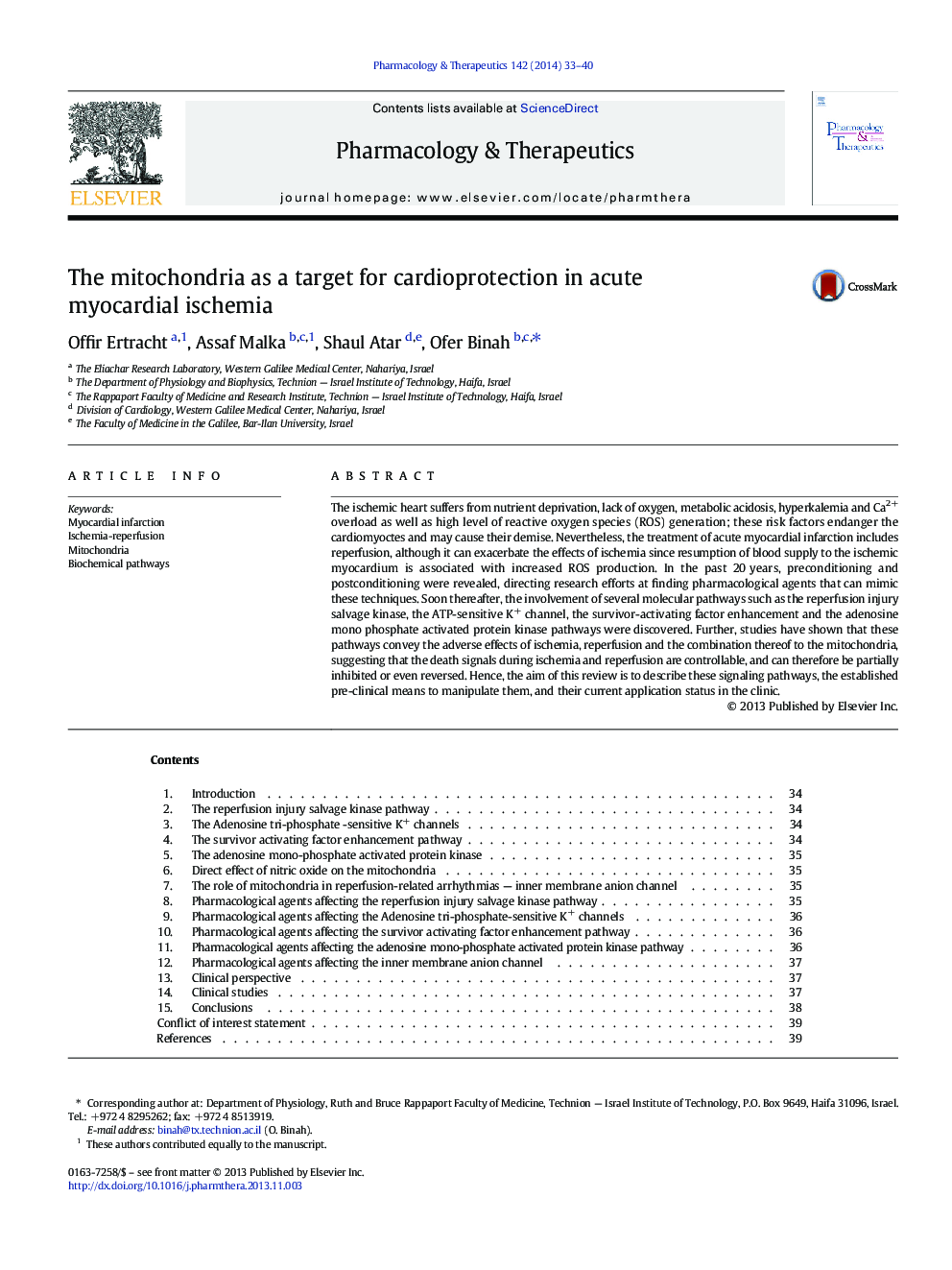| Article ID | Journal | Published Year | Pages | File Type |
|---|---|---|---|---|
| 2563237 | Pharmacology & Therapeutics | 2014 | 8 Pages |
The ischemic heart suffers from nutrient deprivation, lack of oxygen, metabolic acidosis, hyperkalemia and Ca2+ overload as well as high level of reactive oxygen species (ROS) generation; these risk factors endanger the cardiomyoctes and may cause their demise. Nevertheless, the treatment of acute myocardial infarction includes reperfusion, although it can exacerbate the effects of ischemia since resumption of blood supply to the ischemic myocardium is associated with increased ROS production. In the past 20 years, preconditioning and postconditioning were revealed, directing research efforts at finding pharmacological agents that can mimic these techniques. Soon thereafter, the involvement of several molecular pathways such as the reperfusion injury salvage kinase, the ATP-sensitive K+ channel, the survivor-activating factor enhancement and the adenosine mono phosphate activated protein kinase pathways were discovered. Further, studies have shown that these pathways convey the adverse effects of ischemia, reperfusion and the combination thereof to the mitochondria, suggesting that the death signals during ischemia and reperfusion are controllable, and can therefore be partially inhibited or even reversed. Hence, the aim of this review is to describe these signaling pathways, the established pre-clinical means to manipulate them, and their current application status in the clinic.
